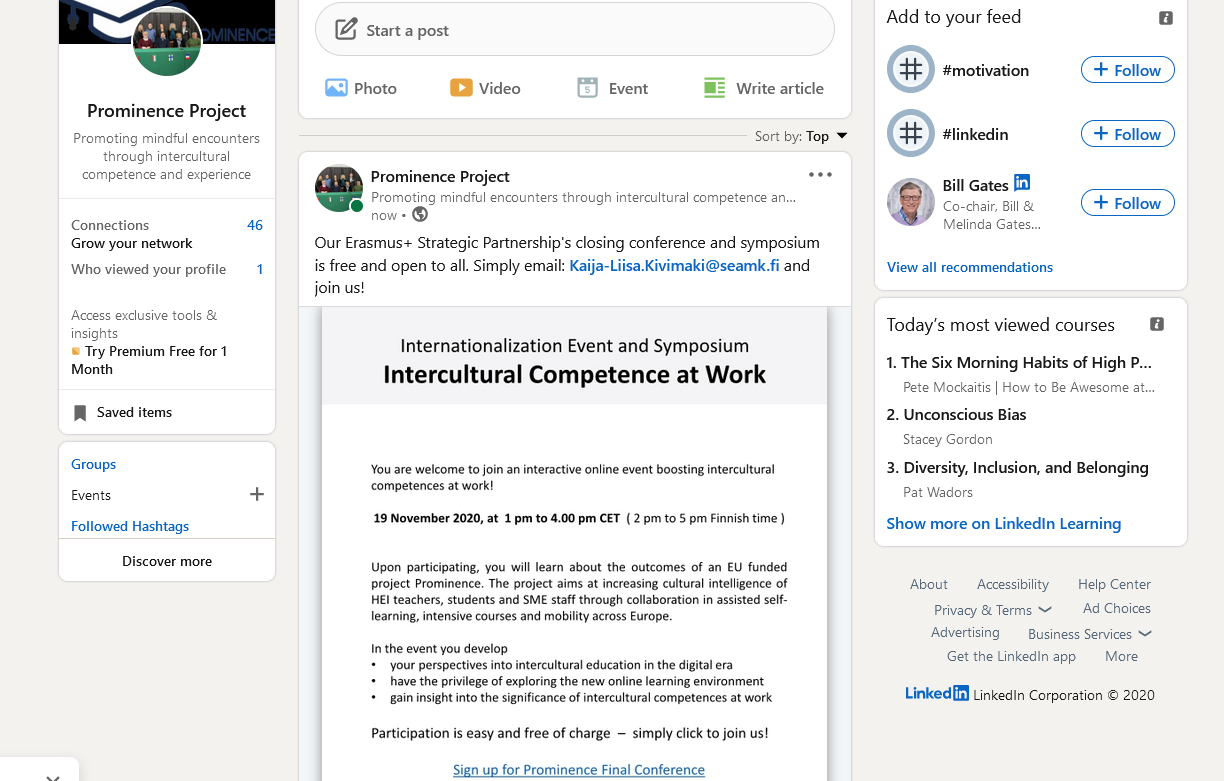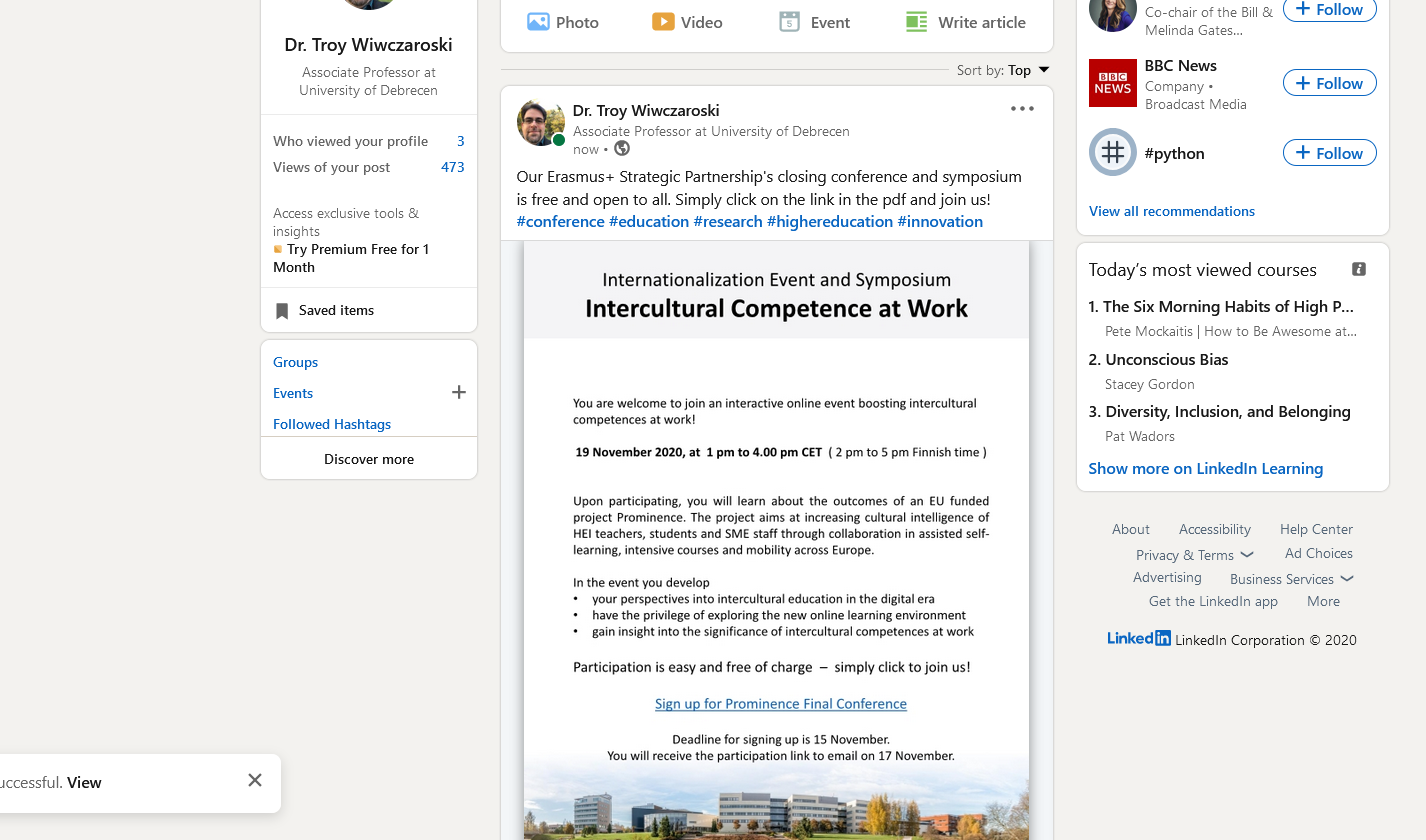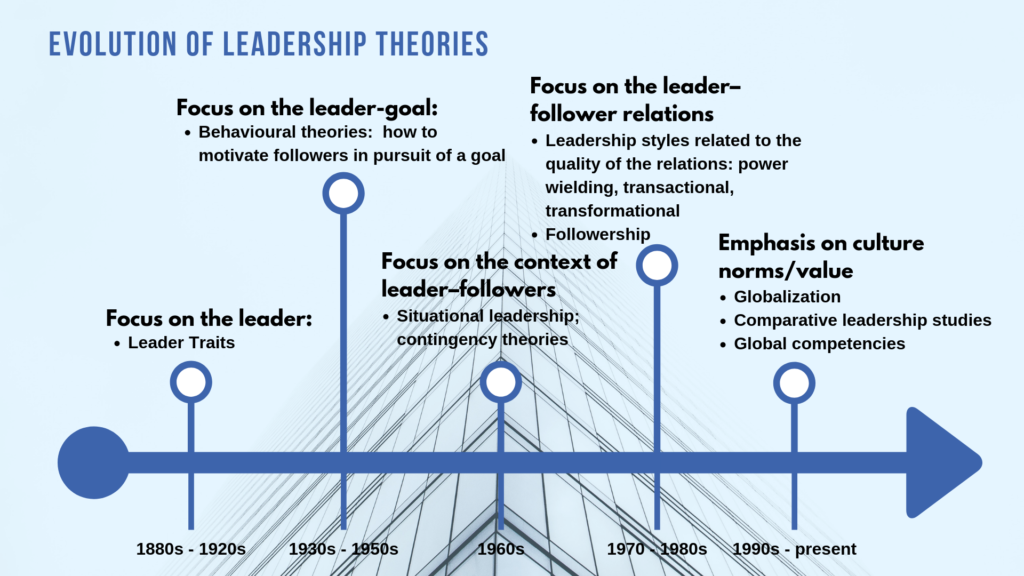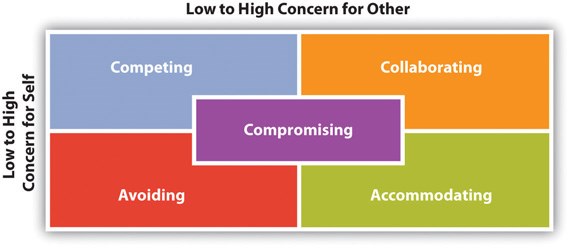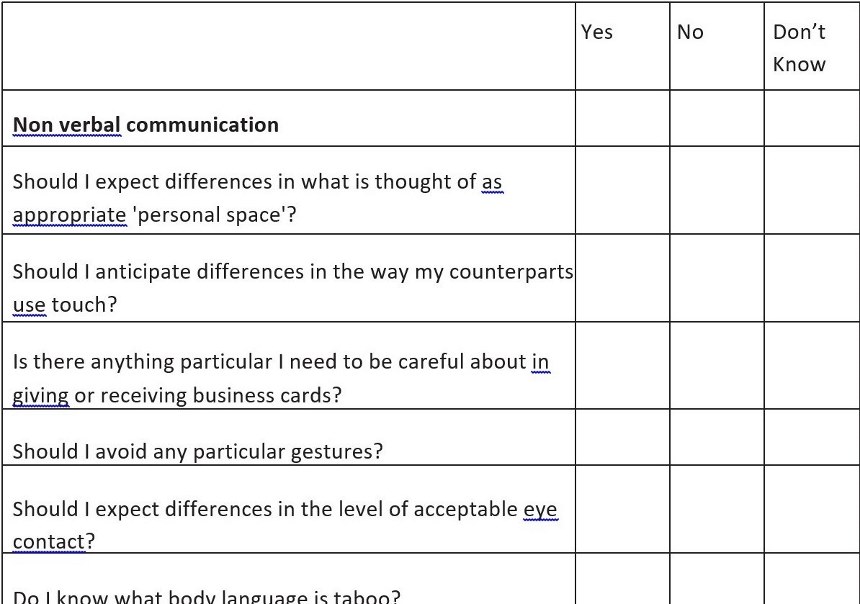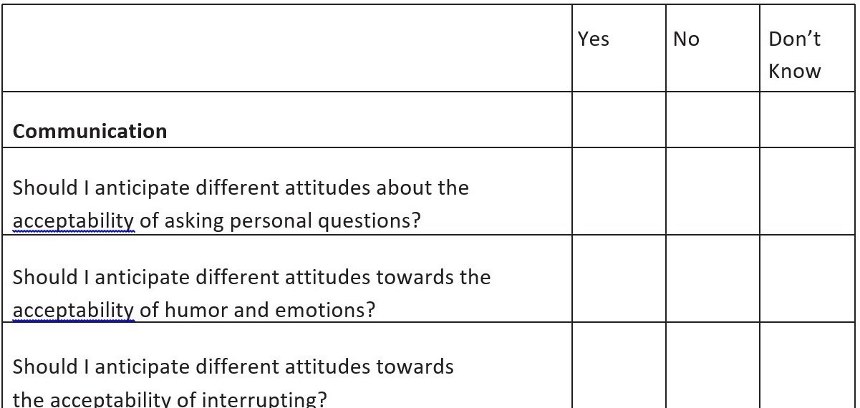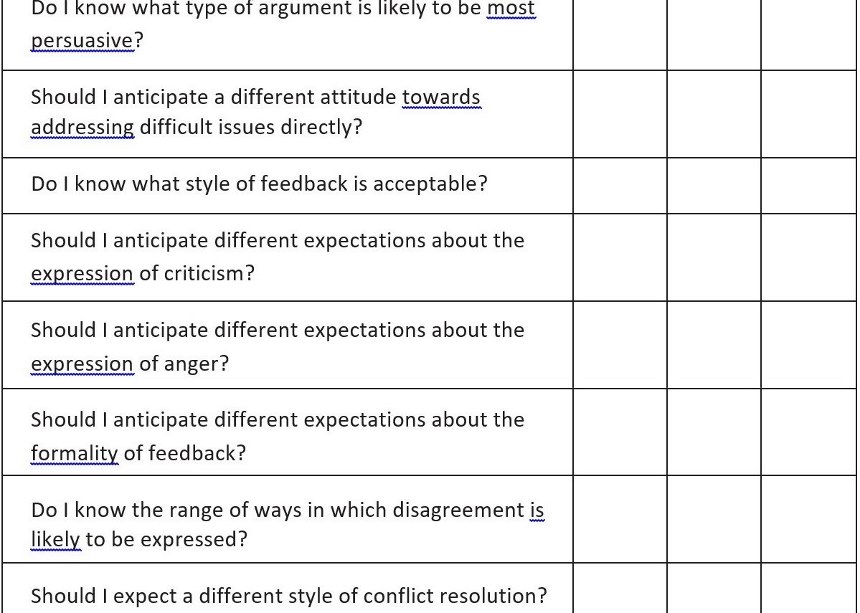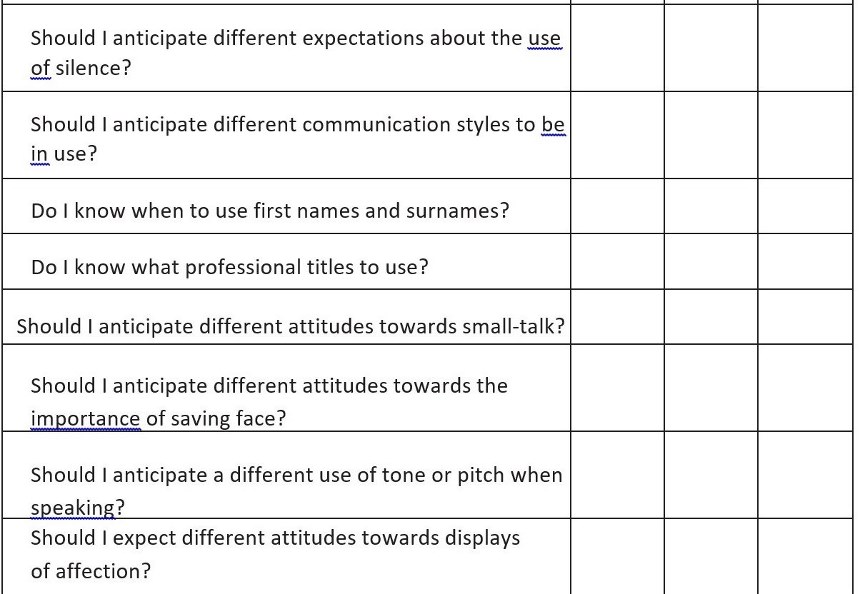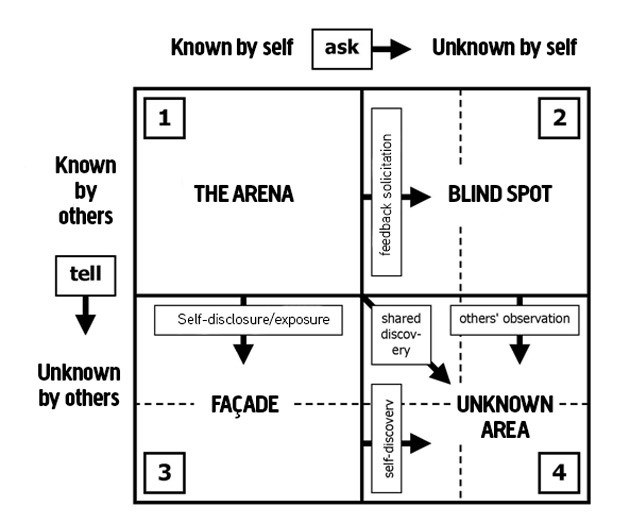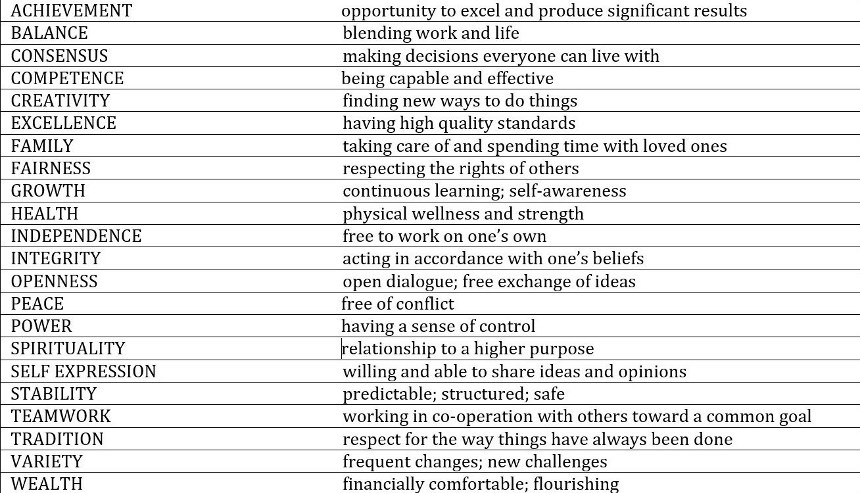learning outcomes
Knowledge and Understanding:You will gain an insight into relevant concepts of culture and enhance your intercultural awareness in order to successfully and effectively communicate in an international business context.
You will learn to understand what the term culture means and recognise the extent to which culture affects the way you view yourselves. You will learn to appraise and apply recognised models and approaches to analyse different aspects of culture.
Intellectual Skills:You will be able to master different communicative interactions effectively while critically reflecting intercultural challenges that may arise in an international business context.
Practical Skills:You will develop and demonstrate appropriate usage of communicative skills in English for intercultural (business related) encounters and learn more confidently to interact and engage with others in an international setting e.g. through role plays on negotiations, presentations, and meetings, usually using English as their “lingua franca”.
Transferable Skills:You will learn to critically reflect on yourself and acknowledge self-perception as opposed to your image in public/in other cultures, while also learning to perceive how your own behaviour can impact international encounters.
Table of Contents
- Introduction
- Intercultural Competence
- Dealing with Cultural Differences/Aspects of Culture
- Models of Culture
1. Introduction
What culturemeans in our contextand explore why one and the same situation can be viewed in so many different ways depending on where you come from. What we all have in common is that we learnt about our culture in our families, at school and actually during all kinds of encounters with others. Nevertheless, whereas one’s parents might have told one that criticism is best conveyed when clearly expressed in countries such as Germany, children in Ireland will have probably learnt from their parents that politeness is more important than the absolute truth and in this way they learnt how to figure out the meaning behind indirect feedback. In our formative years, Germans may have learnt that if there is a problem all we need to solve it is to bring it up with the involved people and discuss it, even when it is sensitive whereas the Irish will have probably learnt that confrontations are better avoided in order not to harm relationships.
The way we think, feel and act is determined by what we learnt in encounters with others from early childhood onwards. One of the first researchers who worked on differences between cultures, the intercultural specialist Geert Hofstede called culture the “software of mind” (Hofstede et al. 2010, p. 4 ff.). Just as computer software determines what computers do, our cultural software determines how we see the world and how we act and react, and this makes sense. Just imagine there were no culture-related rules and conventions, so when we meet, some people would want to shake hands, others to kiss you on your cheek, some bow, etc. etc. The consequence would be total confusion and lots of energy going into processes that are otherwise clearly defined in each individual culture and do not need our special attention. We have simply learnt when to shake hands and who we greet with a kiss and a hug. Therefore we are running more smoothly on our “cultural programme”. Your culture is the way people do things around where you live and Irish culture is the way the Irish do things around where they live. Moll (2012, p. 4) defines culture as “the meaningful way in which people act and interact in their social contexts”.
Study Task 1
Brainstorming and discussion onculture:
The following questions will be discussed in small groups/class:
- Do you consider yourselves well-behaved and polite people?
- Where did you learn the rules for this?
Study Task 2
- Students are invited to explore the question if the set of rules brainstormed in task 1 is universal. What is the set of rules called? The answer is culture.
- Students will identify more features of their culture (cf. eBook chapter Core Concepts of Intercultural Communication p.2).
2. Intercultural Competence
The knowledge about cultural differences and the strategies to avoid misunderstandings or talk about problems that occurred due to misunderstandings is called intercultural competence. In science history, it is a fairly young science which grew alongside the growth of international trade and cooperation between nations in the process of globalisation.
Deardroff (2006, p.249) defines intercultural competence as “the ability to interact effectively and appropriately in intercultural situations, based on specific attitudes, intercultural knowledge, skills and reflection”.
In other words, intercultural competence comprises the skills, factual knowledge and awareness to successfully communicate with people of other cultures. Therefore it is a combination of learning about cultures, reflecting on what kind of cultural programming you bring along and applying strategies with the aim of ensuring efficient communication.
Even when acknowledging the differences between cultures, the very nature of culture remains a challenge for those studying it. In order to describe this challenge, culture is sometimes compared to an iceberg und like an iceberg, whose biggest and most dangerous part is located beneath the water line, aspects of culture are buried deep in people’s attitudes and beliefs and are therefore often difficult concepts for outsiders to grasp. This fact and that we are not able to ignore our own cultural programming to look completely neutrally at other cultures makes a structured approach necessary that is based on the intercultural research.
Study Task 3
3A. Video clip on cultural iceberg
Watch the video and discuss the concept and cultural parameters and dangers that come with icebergs/culture.
- What is the skill called of someone who learns about most concepts above the waterline of the iceberg and a few below the waterline? Answer: Intercultural competence).
- How can you explain/define the term intercultural competence?
Reference: cf. eBook chapter Core Concepts of Intercultural Communication p.3
3B. Group work in groups of 3 (persona A/B and C that receive separately the following instructions):
- Person A: should interrupt the others as often as possible and talk for as long as possible
- Person B: should give the shortest possible answer and count up to three before starting to say anything in response to questions.
- Person C makes sure to keep the conversational ball rolling, asks lots of questions rather than telling about him-/herself and observes the behaviour of the others.
3C.Debriefing:
How did the group participants feel?
There are different styles of communication. Misunderstandings based on different cultural concepts can create a feeling of uneasiness which – if not decoded properly – can lead to harmed relationships.
Reference: cf. different turn taking patterns in Part 3 of the Practice Part – Additional Information.
3. Dealing with Cultural Differences/Aspects of Culture
Despite extensive research on the importance and ways and means of dealing with cultural differences as well as the negative impact of failing to do so correctly most of the literature does not address the question of going beyond enhancing one’s cultural understanding. How can we effectively and successfully handle international encounters, however in a given situation? This chapter looks at dealing with cultural differences and aspects of culture as prerequisites in order to be able to bridge differences across cultures effectively and successfully – such as stressed in D. Deardoff’s definition of Intercultural Competence here above – or in order to interact “mindfully” or “mindful encounters” in the spirit of PROMINENCE.
The term Cultural Intelligence (CQ) by Thomas and Inkson (D.C. Thomas and K. Inkson. Cultural Intelligence. 2004. People Skills for Global Business. Berret-Köhler Publishers Inc. 2nd edition 2009.) comprises a combination of knowledge, behaviour and attitudes the latter of which they call “mindfulness” which could be maybe even best be translated for our context here as “respect” as suggested by P.v. Nispen (cf. P.v. Nispen. The encyclopedia of culture. 2017 Colofon. p. 216) – or maybe in the same spirit as “open mindedness”, “empathy” or “acceptance”.
On a final note we can say that exploring cultural differences should not stop here but lead further to a search of how we can best bridge in a given situation these differences by focussing on commonalities that unite us as us human beings in the end.
Study Task 4
Going beyond: Anchoring Experiencing in previous Students’ Experience:
Students are being asked about their experiences in the field of experiencing cultural differences. Have they experienced misunderstandings or situations which left them uneasy in intercultural encounters? A discussion about personal experience can centre around the following points in particular:
- Low/high context culture
- Direct/indirect communication
- Body language
- Eye contact
- Touch (haptics)
- Space (proxemics)
- Notion of time (15 min)
Reference: cf. also Unit 1 e-book Practice Part: Reflection 2,3,4,5, Activity 6).
4. Models of Culture
Researchers in the field of intercultural studies have of course been interested in detecting all kinds of differences. This can be done by observing human interaction in different cultures. A more reliable means of research is to ask people because then you can dig deeper and not only observe visible behaviour, but also find out about what people think and believe. For this reason, conducting surveys in which a preferably high number of representatives of one culture are asked a catalogue of questions and their answers compared to the answers of representatives of other cultures became the methodological tool researchers used to gain information. The data gathered in such surveys was then analysed for certain recurring patterns and models were established that helped to compare cultures.
Hofstede Model
One of the first to develop a model to compare cultures based on a survey was Geert Hofstede. He conducted a survey amongst the employees of the American computer company IBM in 60 countries beginning in the early 1970s. Based on the analysis of all the answers he developed first four and later added another two cultural dimensions:
- power distance
- individualism versus collectivism
- uncertainty avoidance
- masculinity versus femininity
- long-term versus short-term orientation
- and indulgence versus restraint
The Lewis Model
Richard D. Lewis developed his model in the 1990s after he had lived and worked for more than 20 years in 135 countries. Based on their behaviour, the model allocates cultures to a distinctive place within three categories: linear-active, multi-active and reactive. Alongside Lewis’s vast experience in working in so many countries, he based his model on 150,000 online questionnaires sent to executives in 68 countries.
Linear-active people “do one thing at a time, concentrate hard on one thing and do it within a scheduled time period” (Lewis 2006, p. 30). They are very organized and task-oriented. Multi-active people “do many things at once, often in an unplanned order” (ibid.). They are more emotional, impulsive and relationship-oriented.
The culture map
As Erin Meyer relates her model of comparing different cultures strictly to work situations and gives you an easy-to-use idea where you are situated in her model relative to other cultures, her approach to drawing a culture map should also be mentioned here. Based on her research data from 30 countries she developed a mapping tool that works with 8 dimensions (cf. Meyer 2014):
- Communicating: low-context versus high-context
- Evaluating: direct negative feedback versus indirect negative feedback
- Persuading: principles first versus application first
- Leading: egalitarian versus hierarchical
- Deciding: consensual versus top-down
- Trusting: task-based versus relationship-based
- Disagreeing: confrontational versus avoids confrontation
- Scheduling: linear-time versus flexible-time
Study Task 5
Cultural models help to compare cultures and serve as a tool to understand where the differences are located. Students will explore the questions of whether comparing different cultures is easy and sensitized to understand that they wear their own “cultural lenses” and can therefore not compare cultures objectively.
The following culture models will be explored by students in pairs:
G. Hofstede, R. Lewis and the E. Meyer’s culture map model.
Sources:
- https://hofstede-insights.com/produc/compare-countries
- https://www.crossculture.com/about-us/the-model/
- www.erinmeyer.com
Students will consult the given sources for one of the model assigned to and explain their respective model studied to others.
Reference: Core Concepts of Intercultural Communication


